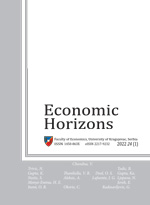THE DYNAMIC CHANGE OF POLLUTANT DISCHARGE IN CHINA: 1991-2012 - BASED ON THE ANALYSIS OF THE MULTIPLE ATTRIBUTE COMPREHENSIVE EVALUATION THEORY
Liu Bolong and Li Danni
School of Economics and Finance of Xi’an Jiaotong University, Xi’an, Shaanxi, China
This paper chooses pollutant discharge as the study object and utilizes a modified scatter degree comprehensive evaluation method to establish the pollutant discharge comprehensive evaluation index. Then, using the convergence test model and from the perspective of intensity and gross, this paper respectively studies the convergence of the pollutant discharge at the nationwide level and in the three major regions. The result shows that the pollutant discharge level of the middle region is the highest, whereas in the western one, it is the lowest; that of the eastern region is higher than the national average. The σ convergence, based on the Theil index, shows that only the middle region shows a feeble σ convergence tendency, whereas the other two ones show a different tendency. Besides, considering the differences of the per capita GDP, the industrial structure, the structure of energy consumption and pollution regulation, the β convergence shows that the two variables of all the regions are conditional β convergence, not absolute β convergence.
Keywords: pollutant discharge, dynamic comprehensive evaluation, convergence, GMM fixed effect model
JEL Classification: R11, O13, C32
Economic Horizons, 2016, Vol. 18, No 2, pp. 105-116; Published online 26 August 2016; doi: 10.5937/ekonhor1602107B




